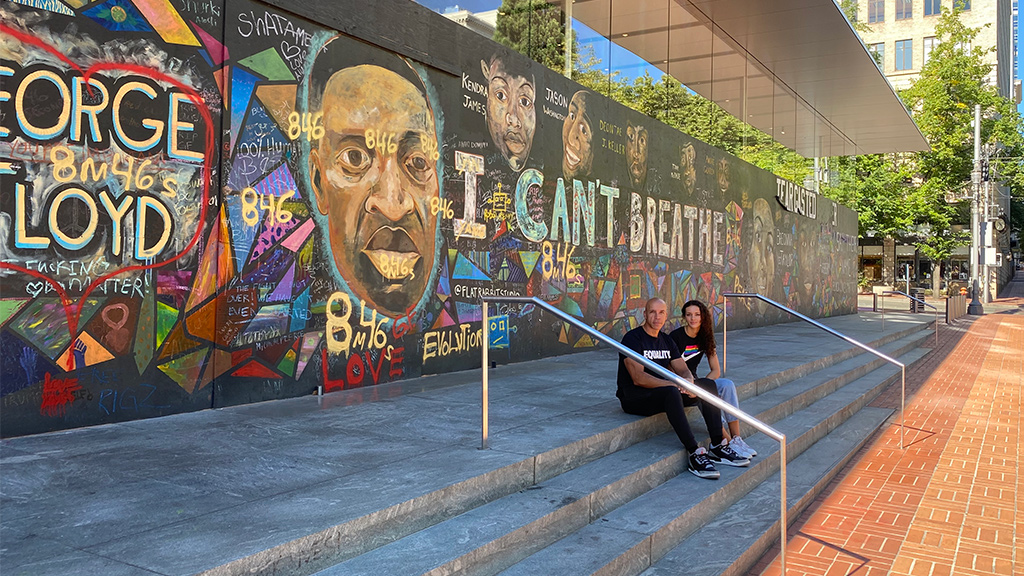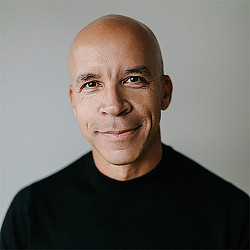7 Ways Creative Leaders Can Build Inclusive Organizations and Solutions: Lessons From a CMO
June 14, 2021 | By Greg Hoffman, guest contributor
Over a year after the murder of George Floyd in the spring of 2020, organizations and business leaders are still coming to terms with the impact of that moment and the ensuing shift in social expectations. We are witnessing a cultural reckoning about our history of systemic racism and racial injustice — a reckoning that has led to an awakening and a movement to transform many parts of American life and business.
In the fields of design and creativity, where I spent my entire professional career working at every level from intern to CMO, we have to make a change. In the architecture profession, only 2% of licensed architects are Black. Representation of Black professionals in the advertising and PR industries is less than 7%. In the American film and television industry, less than 6% of writers, directors, and producers are Black. It’s time to close the distance between where we are today and where our true potential lies as a creative industry.
This requires us to reimagine a future where systemic racism in design doesn’t exist within our industry or within the teams and solutions we create. To do that, we must accept the fact that the lack of representation in our teams, industries, and histories has been by design, and it will be by design that we move to a future of inclusivity. Only through sustained intention will we be able to more evenly distribute our collective creative talents to underserved individuals and communities.
The unique role of the design and creative industry
I have always believed that the creative industry and creative leaders can play a critical role in bringing about change. My daughter Ayla is a high school senior and an aspiring creative director who will be going off to college in the fall to study design. Last August, I took Ayla down to the George Floyd mural in front of the Apple flagship store in downtown Portland, Oregon. Before it was relocated this January, the powerful mural spanned the entire length of the block-long glass façade of the store, and at its center was a portrait of George Floyd and the words, “I can’t breathe.” Adjacent to the mural on other building facades were many other artworks dedicated to highlighting racial injustice and the fight for equality.
I wanted my daughter to see the vital role that artists and designers play as visual storytellers in the moments we experienced this past year. We talked about how their creativity reveals the hard truths in our society in profound ways. How, by using their imagery and words, they are able to stir emotions within people and, in turn, inspire them to take action.
We have seen, and my daughter has been witness to, the power of creativity across a multitude of disciplines this year; from art and architecture, to writing and film-making. This ongoing creative output has reached into the hearts and minds of people, unifying them through a common cause: such as fighting against racial injustice, calling attention to health care inequities, stopping Asian hate crimes, or preventing voter suppression. Creativity has served as a catalyst by inviting people into the conversation through inspiration, provoking reflection, and empowering action.
Why are creative roles so well-positioned to make an impact? As right brain thinkers we look at the world around us in a non-linear way. We are wired to seek out the truth and respond to it through our craft. Because of the characteristics of empathy, curiosity, and courage that naturally reside within the creative’s mindset, we instinctually put forth bold ideas, regardless of the critics. In practice, this means we have the responsibility to end the design of unintentionally racially biased products, spaces, services, and systems. This type of action should not be just an initiative. Rather, this is about developing new habits and rituals.
Creative roles have an opportunity to lead
Some may say that they aren’t in the position to influence such change, but we all have the opportunity to practice creative cultural leadership. Whether you are involved in the conception of ideas or their application, we all play a crucial role in the design process. And whether you are the leader of one or the leader of many, it’s time to exercise your voice and talent. Indifference isn’t an option if we are to push society forward to a more equitable future.
I’ve created a framework for creative leadership that I call Equality by Design. It supports both the act of being intentional in the way we practice socially responsive creativity and the actions we take to build a more inclusive and better represented industry of design.
Here are the seven key actions creative leaders can take to practice Equality by Design:
1. Strengthen Your Peripheral VisionSee what others see, find what others don’t. Go beyond simple observations and assumptions and find the unseen needs that exist in underserved communities.
2. Reveal the Hard TruthsEmbrace the uncomfortable conversations to uncover the deeper truths within society and reveal them in more profound ways. Use your platform to amplify the voice of others not just your own.
3. Listen Before You LeadInvite the community into your creative process to avoid imposing a preexisting design ideal. Instead, draw on design cues that are informed by and at home within the community you serve.
4. Be More Than a ProductGo beyond transactions. Create new systems that serve the moment as well as a life-long journey of progression and transformation.
5. Play in the IntersectionsCreate in the spaces where different brands, products, and services intersect. Through collaboration, we build on each other’s strengths, distribute our creative power more evenly, and unlock access to a better future for everyone.
6. Live the Personal in the ProfessionalCreating more diverse representation by the numbers isn’t enough. It’s crucial to empower diverse individuals to bring their life experience into their work experience. By leveraging one’s life perspective, you can affect the lives of countless others.
7. Design DreamsIt’s not enough to serve only functional needs. The underserved communities you look to support, have aspirations too. Infuse the solutions you create with emotion through the stories and dreams from the community itself.

